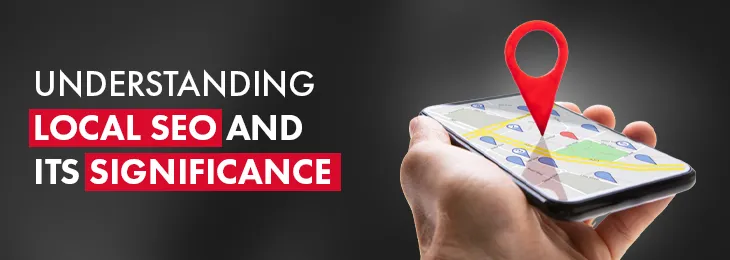How can you know whether what you’re doing with SEO is truly effective?- this is one of the trickiest aspects of the field. Answering the question is challenging. Particularly because it might take months for SEO to start to pay off. In this blog, we will discuss 5 SEO metrics that you must analyse and then improve efforts on the ones that give you the best results.
1. Clicks overall
At the end of the day, the goal of SEO is to increase Google traffic. How can you effectively determine how much traffic Google is sending your way? In the Google Search Console, click “Total Clicks” and exactly how many individuals clicked on your website from Google’s organic results will be displayed in this report.
Now, there is also a ton of additional useful material available here, like first impressions and CTR on average. But the overall number of clicks is far more significant than these. In fact, “total clicks” should be your SEO compass, in my opinion. If that figure is increasing, your SEO efforts are paying off.
If not, you should probably make a change.
That brings us to our second crucial SEO measure.
2. Key Web Elements
Google uses Core Web Vitals to evaluate the general user experience on your website. Why is this crucial?
As you may be aware, Google now bases some of how it ranks websites on what is referred to as “User Experience Signals.” To put it another way, Google doesn’t only rank your website based on standard SEO parameters like backlinks & keyword optimization. (Even though it’s still significant.)
Google wants to make sure your website is VERY user-friendly instead. Additionally, Google can easily determine how consumers engage with your website thanks to its AI-based RankBrain algorithm, because of this, user engagement measurements are becoming a significant component of the algorithm. Paying attention to your Core Web Vitals report analyses the user experience on your site based on page speed & efficiency.
3. Third-party Domains
My group and I examined 11M Google SERP results earlier this year. As you might anticipate, we found that links continue to be a significant factor in Google’s algorithm. This outcome shouldn’t come as a surprise to someone who has been doing SEO for some time. The problem is that we discovered more than simply a correlation between backlink volume and rankings. Additionally, we discovered that websites with many referring domains frequently appear higher in Google organic search results. The variety of websites linking to you is measured by the number of referring domains. not the overall amount of backlinks.
4. Natural Traffic
Another approach to gauge how much traffic you receive from Google organic is through organic traffic.
This SEO measure is simple to locate in Google Analytics.
Start by visiting Audience Overview.
Next, click “Add Segment.”
then select “Organic Traffic.”
Voila! You can count the number of search engine users who visit your website.
Isn’t this the same thing as “Total clicks” in the Search Console, you could be asking? Yes, sort of.
Total clicks and “Organic traffic” effectively measure the same thing. But they each approach it differently.
For instance, “Total clicks” MEASURES ONLY Google traffic. Additionally, “Organic traffic” considers all search engines, including Bing. They also use somewhat different methods for measuring traffic. This explains why the figures from each source occasionally vary. However, the general tendency frequently coincides. This is the reason I enjoy examining both metrics: if Total clicks and Organic traffic are both trending upward, that’s encouraging.
5. Metrics for User Experience
The Core Web Vitals report, which is the second SEO measure on our list, was already discussed.
The problem is that Core Web Vitals doesn’t give you the whole picture. The speed at which a page load is crucial. Furthermore, you do not want a sluggish website to negatively affect user experience. Because of this, Core Web Vitals concentrates nearly entirely on these two areas.
But if you only focus on Core Web Vitals, you won’t get the full picture of UX.
You want to concentrate on two more significant user experience signals that Google incorporates into its algorithm:
Bouncing frequency
Dwelling time
Please note that Google evaluates user interaction with your website in a variety of other ways as well.
However, they’re two of the most crucial. The study I described previously on the 11M+ results ranking criteria found a significant relationship between stay duration and first page ranks.
The second reason I suggest concentrating on these two SEO indicators is a useful one:
They are simple to gauge and enhance. In reality, Google Analytics makes it simple to locate both of these indicators. Simply navigate to Behavior Site Content Landing Pages to get started. Additionally, you’ll get an analysis of how visitors engage with each page on your website. Here, focus on the following two columns: Sessions’ average length and bounce rate. The average session duration measures how long visitors stay on your website after arriving (aka Dwell Time).
The better is the greater value for this number. Google seeks to provide users with results that satisfy their needs. Nothing more clearly conveys that a page is worse than someone spending only five seconds on it before returning to the search results. Additionally, pay attention to your bounce rate. My bounce rate is all over the place, as you can see in my report.
The bounce rate for some sites is high (for example, /hub/youtube/name). The bounce rate on other sites (/how-to-get-youtube-subscribers) is really low.
This is quite typical. Understanding WHY some sites have a high bounce rate is crucial in this situation. and making those pages better.
Conclusion
These are 5 of the many SEO metrics that can be tracked and worked upon to improve the results from your SEO efforts. To know more, contact us now.



